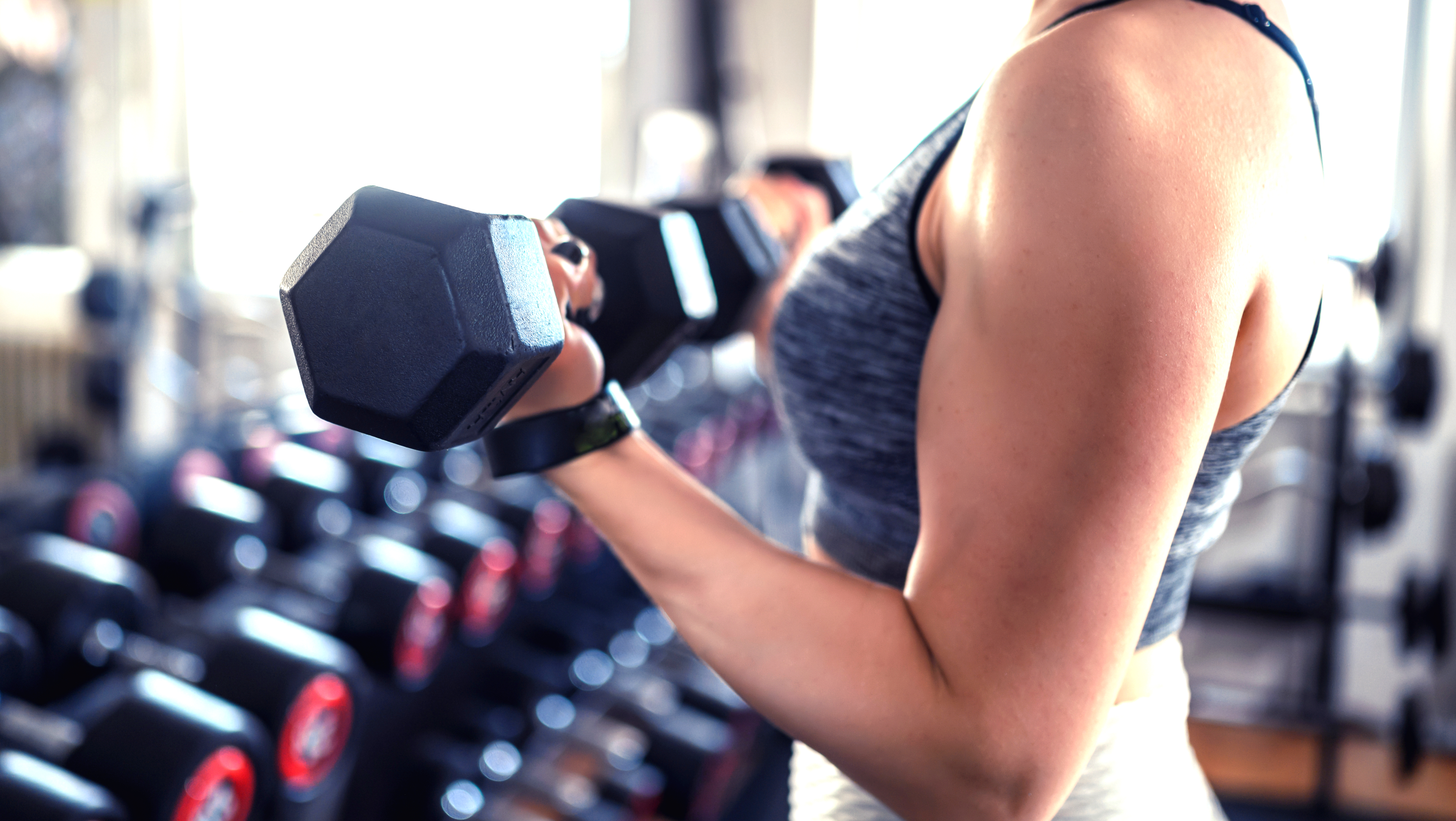
Harness the power of an abs and arms workout that only requires two dumbbells and 25 minutes without using the gym or queuing for machines. This dumbbell strength workout is just what you need to build muscle and strengthen your upper body.
We recommend a pair of the best adjustable dumbbells so that you can scale the weights according to the exercise — you’ll often lift lighter weights for isolation exercises like bicep curls and heavier ones for compound exercises (multi-joint, multi-muscle exercises) like an overhead press.
The 12-move dumbbell workout is suitable for all fitness levels, but if you’re unsure about your form or working with an injury, seek medical advice or check in with a qualified personal trainer. Ready? Here it is.
What is the 25-minute arms and abs dumbbell strength workout?
The workout, designed by fitness YouTubers Juice and Toya, has already garnered close to half a million views and counting. It has been produced as an EMOM, which means "every minute on the minute." You’ll have a set number of reps to complete each exercise; the rest of the time left within the minute is yours to recover.
As mentioned, having several pairs of weights is helpful, but you could choose to adjust the reps or lift a medium set that allows you to keep good form for each exercise. As a guideline, Juice uses 25-pound dumbbells and Toya 10-15 pounds, but we’ve tried the workout at Tom’s Guide, and we’d recommend lifting heavier if you have experience with weightlifting.
Whatever weights you choose, the last few reps should be challenging to finish. We also recommend watching the video below for modifications and scaling options throughout. If you plan to repeat the workout, remember the weights and reps so you can increase them over time (a technique called progressive overload).
EMOM x 3
Sign up to get the BEST of Tom's Guide direct to your inbox.
Get instant access to breaking news, the hottest reviews, great deals and helpful tips.
3 x 8-minutes
Group 1: 2 sets
Wide row x 15 reps
Bicep curls x 10 reps per side
Alternating reverse flyes x 16 reps
Rotating curls x 15 reps
Group 2: 2 sets
Alternating wide shoulder press x 20 reps
French press x 15 reps
Upright row x 5 reps
Floor tricep dips x 15 reps
Group 3: 2 sets
Floor chest press x 20 reps
Chest flyes and knee tucks x 15 reps
Single-arm press and tuck x 10 reps per side
Sit-up and press x 10 reps
The duo split the workout into three groups of four exercises for two sets each. The three EMOMs are eight minutes each, split into back and biceps, shoulders and triceps and chest and abs. The push-pull split is common in strength programs, helping you train multiple opposing groups for an efficient and powerful upper-body workout. If you barely get the reps done before the next minute, decrease the weight or reps, and if you’re getting too much rest, increase.
The dumbbell workout includes a healthy dose of isolation and compound exercises, so you’ll switch from moves like the French press and tricep dips, which are taxing for your triceps, to various press combinations.

Compound exercises help fatigue your larger and more powerful muscle groups while isolation exercises target smaller muscles like the biceps, triceps and abs; pushing activates your front body, namely the pecs, triceps and anterior deltoids, and pulling hits your posterior body, like the latissimus dorsi (wing-shaped muscles that run down the sides of your back), rear deltoids and upper, mid and lower trapezius.
Verdict
While these exercises pair well together, they don’t reinvent the wheel. Still, you’ll pack on plenty of intensity through your rep and weight choices, helping to fatigue upper body muscles without heavy weights. You’ll also hit the front and back body in one go, although the session is press-heavy, and there are fewer dumbbell back exercises than we’d choose.
If you’re new to strength training and unsure how you should program sets, reps and load without the help of a personal trainer, we cover hypertrophy vs strength training to help break down the basics. If strength training is your goal (to build strength rather than muscle), you’ll want to stick to much heavier weights, whereas hypertrophy focuses on a higher rep range at a lighter load to build muscle — like this workout.
You can adapt dumbbell circuit training to help you grow and strengthen muscles, but remember to train consistently (at least twice a week) and increase the intensity using volume — add load or reps, for example. Whether or not you’re a one-and-done kind of exerciser, we recommend hitting the bookmark on this beast.
More from Tom's Guide

Sam Hopes is a level 3 qualified trainer, level 2 reiki practitioner and senior fitness writer at Tom's Guide. She is also currently undertaking her Yoga For Athletes training course. Sam has written for various fitness brands and websites over the years and has experience across brands at Future such as Live Science, Fit&Well, Coach, and T3.
Having worked with fitness studios like F45 and Virgin Active, Sam now primarily teaches outdoor bootcamps, bodyweight, calisthenics and kettlebells. She also coaches mobility and stretching-focused classes several times a week and believes that true strength comes from a holistic approach to training your body.
Sam has completed two mixed doubles Hyrox competitions in London and the Netherlands and finished her first doubles attempt in 1:11.
